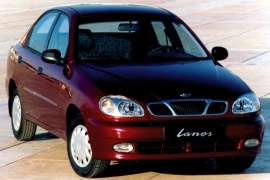DAEWOO Lanos Models/Series Timeline, Specifications & Photos
First production year: 1996
Engines: Gasoline
By 1996, Daewoo needed to replace the already old Nexia/Cielo, based on the 1984 Opel Kadett E.
The Daewoo Motors ceased to exist in 2001 when it was bought by General Motors, with which it was linked and produced few vehicles based on GM platforms. The Lanos was the last compact vehicle produced by the Korean company, and its success was limited due to high price and weak performance. After GM purchased it, the Lanos was facelifted and sold in some parts as Chevrolet Lacetti.
The Lanos was introduced at the peak of the biodesign era, with round curves and surfaces. Giorgetto Giugiaro made its design, and the final details were shaped at Italdesign, in Italy. The car was available in three shapes: coupe, hatchback with five doors, and a sedan. The latter was the main choice for East European customers.
Inside, the car-maker installed comfortable seats and a curved dashboard, which resembled the one found in the first generation Mondeo. It was just a coincidence, of course. Lanos was an important evolution for the Korean brand, which tried to grow faster than its main home-competitor, Hyundai Motor Company. On the center stack, Lanos featured a sound system with a radio-cassette and CD-player. It was a time of changes in the way used to listen to music on the road.
The platform was carried-over from the Nexia/Cielo but with different settings for the suspension. Porsche helped to develop the car. For the powerplant, Daewoo worked closely with several suppliers. But by the time Lanos was known enough to increase its market share, the parent company fell into financial troubles that forced them out of the market.
